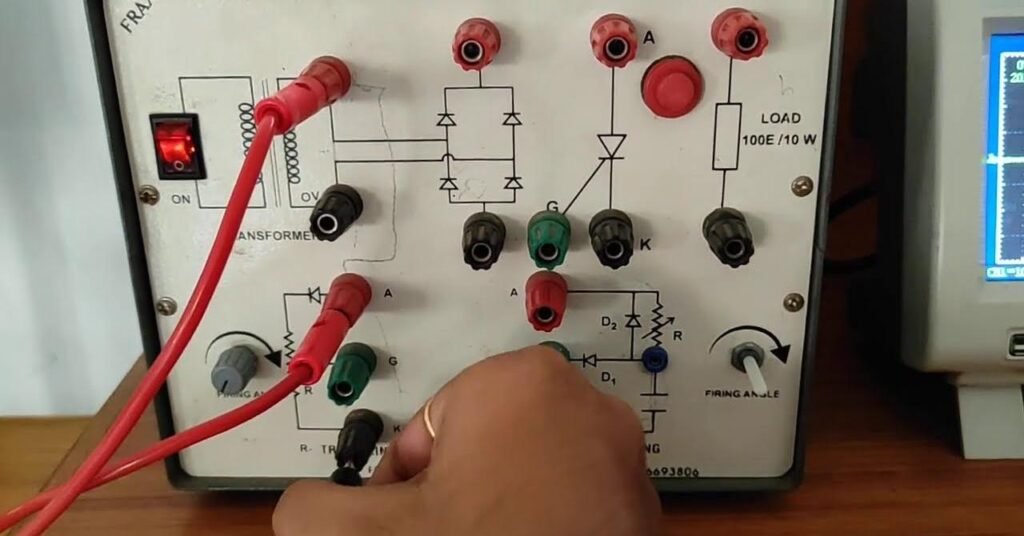Are you curious to know what is firing angle? You have come to the right place as I am going to tell you everything about firing angle in a very simple explanation. Without further discussion let’s begin to know what is firing angle?
In the realm of electrical engineering, the concept of “firing angle” holds a significant place, dictating the efficient control of power in various applications. This crucial parameter is the key to regulating the output of power electronic devices, enabling precise adjustments and smooth operation. Join us as we delve into the world of firing angles, unravel their importance, and explore how they contribute to the effective management of electrical systems.
What Is Firing Angle?
The firing angle, also known as the conduction angle or delay angle, refers to the angle of time delay between the zero crossing of the voltage waveform and the point at which a power electronic device, such as a thyristor, begins to conduct or switch on. In simpler terms, it’s the point at which the device starts allowing the flow of electrical current.
The Significance Of Firing Angle:
- Power Control: The firing angle is a crucial parameter for controlling the power output of devices like thyristors, which are commonly used in applications like motor speed control, voltage regulation, and power conversion.
- Efficiency: By adjusting the firing angle, engineers can regulate the amount of power delivered to a load, optimizing efficiency and minimizing energy wastage.
- Dimming Control: Firing angles play a role in applications such as dimming of incandescent lamps, where varying the firing angle can control the brightness of the lamp.
- AC Voltage Regulation: In AC voltage controllers, adjusting the firing angle can control the output voltage supplied to the load, offering precise voltage regulation.
Applications Of Firing Angle:
- Motor Control: Firing angles are used in motor drives to control the speed of AC motors, enabling smooth acceleration and deceleration.
- Heating Applications: Firing angles are employed in electric heaters to regulate the amount of power supplied, ensuring optimal heating levels without overheating.
- Inverters: In inverters, the firing angle controls the output voltage and frequency of the generated AC waveform.
- Power Supplies: In power supply circuits, firing angles determine the output voltage and current supplied to devices.
Mathematical Representation:
The firing angle is usually represented in degrees, with 0 degrees indicating no delay (full conduction) and 180 degrees indicating maximum delay (no conduction). The mathematical relationship between the firing angle, the AC supply frequency, and the output waveform frequency is essential for precise control.
Conclusion:
The firing angle stands as a critical parameter in the world of power electronics, serving as the bridge between electrical theory and practical application. By adjusting this angle, engineers and technicians can finely tune the power output of devices, leading to efficient energy utilization and smooth operation of electrical systems. As we marvel at the innovations driven by power control, let’s recognize the pivotal role of the firing angle in shaping the modern landscape of electrical engineering and its impact on a multitude of applications that rely on precise power management.
FAQ
What Is The Concept Of Firing Angle?
The number of degrees from the beginning of the cycle when SCR is switched on is firing angle. Any SCR would start conducting at a particular point on the ac source voltage. The particular point is defined as the firing angle.
What Is The Firing Angle Of Scr?
Thus, to allow the SCR to start conduction at peak or maximum voltage, we have to trigger it at a firing angle of 90 degrees. To do that, we have to close the gate trigger switch S1 (in the circuit given above) after 5 milliseconds each time in the positive half-cycle of the voltage waveform.
What Is The Definition Of Firing Angle In Power Electronics?
Firing angle α – Definition. ▶ It is defined as angle measured from the instant that gives. maximum output voltage to the one at which it is actually triggered. ▶ It is measured from the angle that gives largest average. output voltage.
What Is Firing Angle Or Delay Angle?
Firing-angle delay is a term used in power electronics to describe the delay between the application of a control signal and the firing of a thyristor or other solid-state switching device. It is an important parameter in controlling the output power of a converter or inverter circuit.
I Have Covered All The Following Queries And Topics In The Above Article
What Is Firing Angle
What Is Firing Angle Of Scr
What Is Firing Angle In Scr
What Is Firing Angle In Power Electronics
What Is Meant By Firing Angle
What Is Firing Angle In Thyristor
What Is Meant By Firing Angle Control
What Is Firing Angle Of Thyristor
What Is The Firing Angle
What Is The Relation Between The Firing Angle Of Scr And The Output?
What Will Happen If The Firing Angle Is Greater Than 90 Degrees
What Is The Maximum Firing Angle Of R Triggering Circuit And Why
What Is Firing Angle Of A Thyristor
What Is Firing Angle Control
What Is Firing Angle?
What Is Firing Angle
What is a firing angle?






